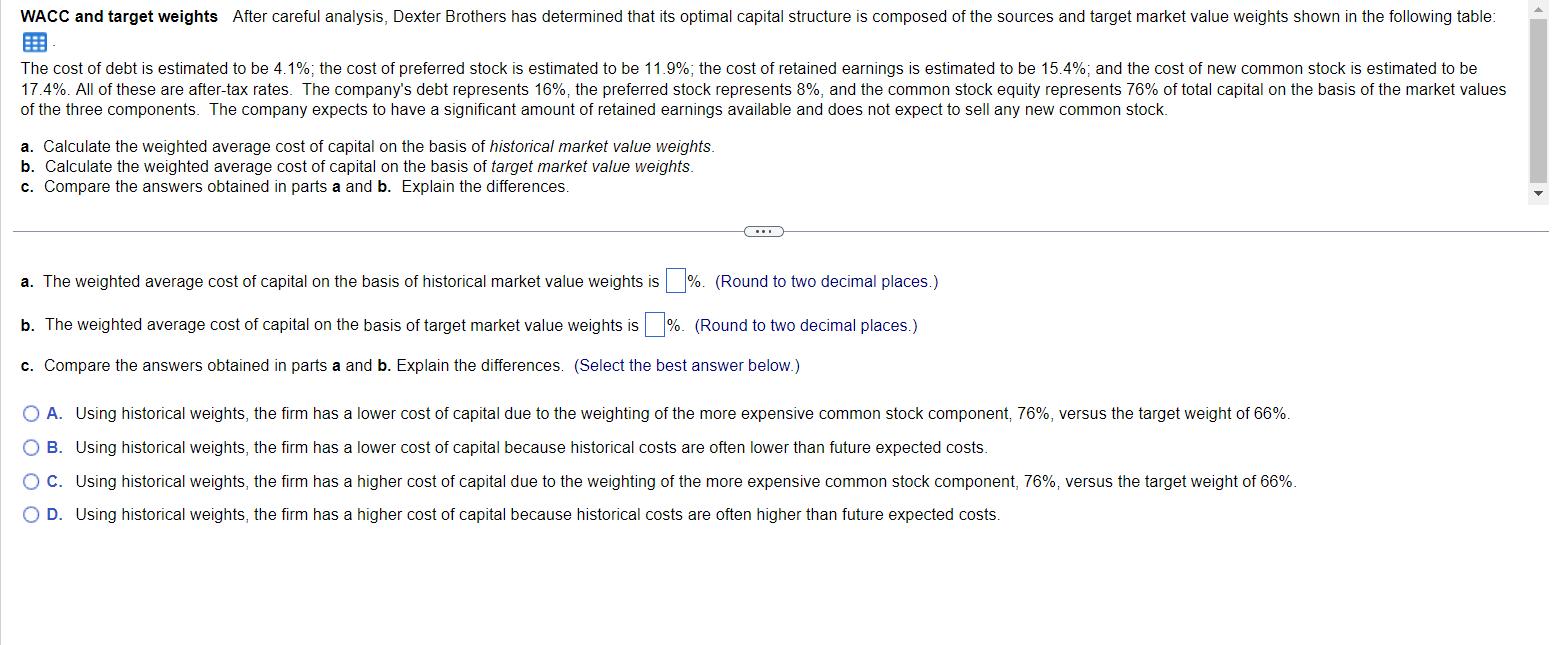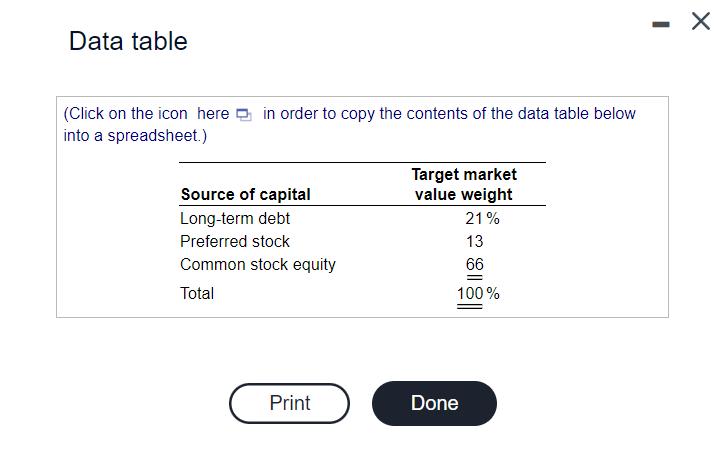Answered step by step
Verified Expert Solution
Question
1 Approved Answer
Fcorpin please you don't solve it. Others please give clear answer for each box WACC and target weights After careful analysis, Dexter Brothers has


Fcorpin please you don't solve it.
Others please give clear answer for each box
WACC and target weights After careful analysis, Dexter Brothers has determined that its optimal capital structure is composed of the sources and target market value weights shown in the following table: The cost of debt is estimated to be 4.1%; the cost of preferred stock is estimated to be 11.9%; the cost of retained earnings is estimated to be 15.4%; and the cost of new common stock is estimated to be 17.4%. All of these are after-tax rates. The company's debt represents 16%, the preferred stock represents 8%, and the common stock equity represents 76% of total capital on the basis of the market values of the three components. The company expects to have a significant amount of retained earnings available and does not expect to sell any new common stock. a. Calculate the weighted average cost of capital on the basis of historical market value weights. b. Calculate the weighted average cost of capital on the basis of target market value weights. c. Compare the answers obtained in parts a and b. Explain the differences. a. The weighted average cost of capital on the basis of historical market value weights is %. (Round to two decimal places.) b. The weighted average cost of capital on the basis of target market value weights is %. (Round to two decimal places.) c. Compare the answers obtained in parts a and b. Explain the differences. (Select the best answer below.) O O A. Using historical weights, the firm has a lower cost of capital due to the weighting of the more expensive common stock component, 76%, versus the target weight of 66%. B. Using historical weights, the firm has a lower cost of capital because historical costs are often lower than future expected costs. O C. Using historical weights, the firm has a higher cost of capital due to the weighting of the more expensive common stock component, 76%, versus the target weight of 66%. OD. Using historical weights, the firm has a higher cost of capital because historical costs are often higher than future expected costs.
Step by Step Solution
There are 3 Steps involved in it
Step: 1

Get Instant Access to Expert-Tailored Solutions
See step-by-step solutions with expert insights and AI powered tools for academic success
Step: 2

Step: 3

Ace Your Homework with AI
Get the answers you need in no time with our AI-driven, step-by-step assistance
Get Started


